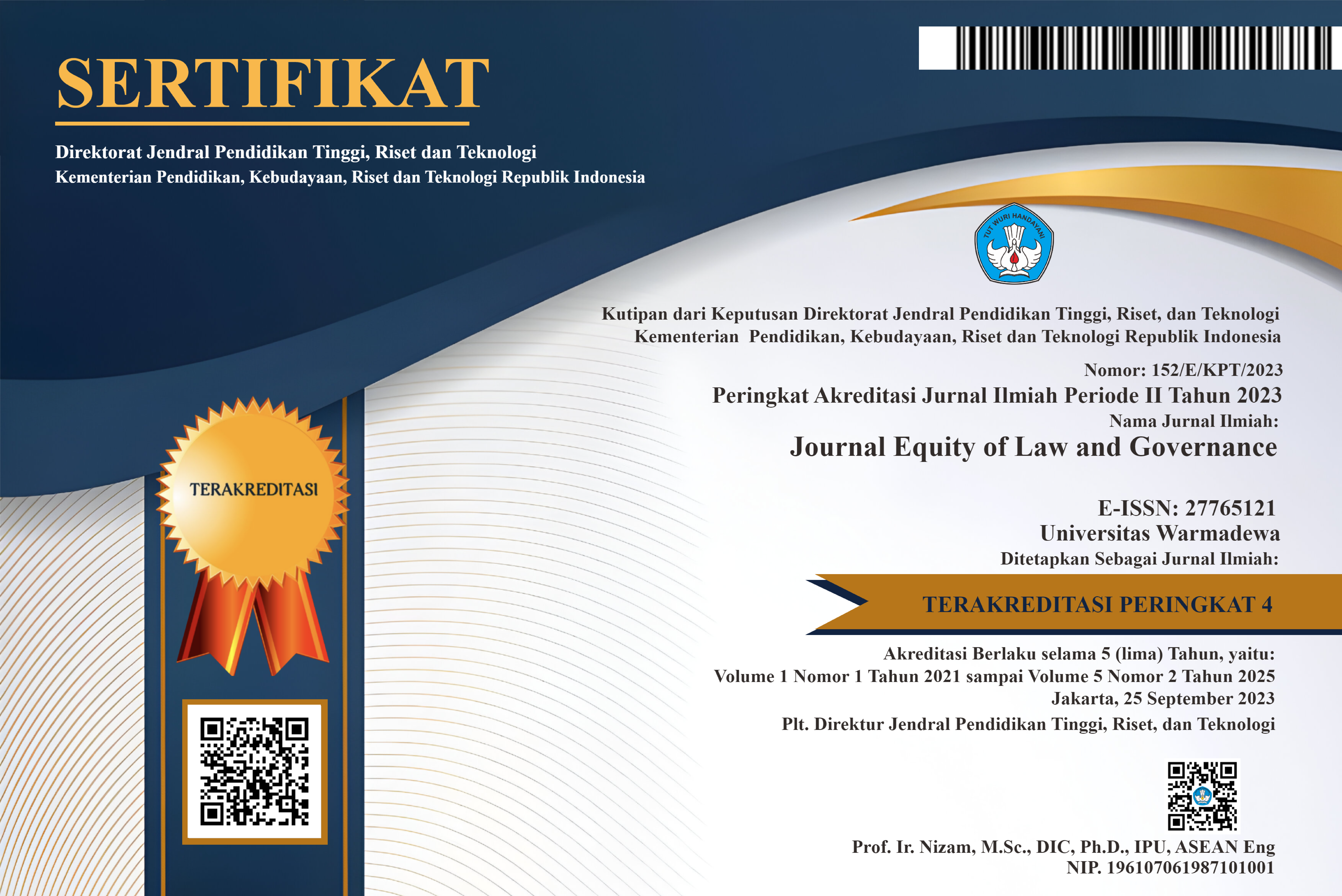Criminological Juridical Analaysis of The Crime of Premeditated Murder of a Beautiful Model in Pandeglang District
Abstract
This research aims to find out what factors make the perpetrators of murder commit these acts seen from the theory of criminology. In this research the author uses the Empirical Normative Legal Research methodology. This empirical normative legal research method is basically a combination of normative legal approaches by adding various empirical elements. To collect data in this study, researchers used secondary data, namely data obtained from literature. The usefulness of secondary data is to find initial data or information, obtain a theoretical basis or legal basis, obtain limitations, definitions, meaning of a term. Judging from the theory of criminology, the perpetrators of the crime of murder are motivated by two factors, namely revenge factors (heartache) and social environmental factors. The perpetrator is subject to Article 340 of the Criminal Code "whoever intentionally and with premeditation takes the life of another person, shall be punished by death or life imprisonment or a maximum imprisonment of twenty years." in the Decision of the Supreme Court of the Republic of Indonesia Number. 126/Pid.B/2023/PN Pdl the perpetrator was sentenced to 15 years imprisonment. On the other hand, Criminal Law tends to only pay attention to how to provide punishment and deterrent effects to the perpetrator, without paying attention to why the perpetrator committed the act. This disregard for the rights of victims often creates its own problems. However, the study of criminology can provide a deeper understanding of the causes of crime, including premeditated murder.
References
Adiyansyah Lukman Hakim, Rajahala B Sinun, & Febrian Wali. (2024). Criminological Review of the Root Causes of Crime: Analysis of Emergent Factors. Jurnal Intelek Insan Cendikia, 1(1).
As. Alam. (2010). Pengantar Kriminologi (Pusraka Refleksi, Ed.).
Besse Patmawati, S. H. M. H. (2023). Kriminologi (S. Sos. ,M. A. P. Rizki Afri Mulia, Ed.).
Echwan Irianto. (2021). Unsur Rencana Dalam Tindak Pidana Pembunuhan Berencana. Jurnal Yudisial.
Gilang Herdila Wiratama. (2023). Telaah Pasal 338 -340 KUHP Tentang Pembunuhan Berencana (Analisis Pembunuhan Berencana Mahasiswa Universitas Surabaya Yang Di Masukkan Koper Lalu Dibuang oleh Guru Les Musik). Jurnal Multi Displin .
HASURI. (2018). Restorative JusticeBagi Anak Pelaku Tindak Pidana PembunuhanDalam Perspektif Pidana Islam. Jurnal Ilmu Hukum, 2(1), 55–66.
Mar’ah Shaleha. (2021). Tinjuan Kriminologi Fenomena Penggunaan Senjata Tajam Oleh Anak Kabupaten Bantaeng. Universitas Negeri Makassar.
Riska Srihastuti. (2024). Tinjauan Kriminologi Tindak Pidana Pembunuhan Berencana Di Wilayah Hukum Polres Karawang (Studi Putusan Nomor 155/Pid.B/2022/Pn Kwg) Criminological Review Of Planned Killing In The Region Karawang Polres Law (Study Of Decision Number 155/Pid.B/2022/Pn Kwg). Jurnal Ilmiah Wahana Pendidikan, 4.
Rizal Khalid Efendi. (2021). Analisis Aspek Kriminologi Putusan PN Mojokerto No: 691/Pid.B/Pn. Mkrt tentang Pembunuhan Berencana. UIN Sunan Ampel Surabaya.
Romli Astasasmita. (2010). Teori dan Kapita Selekta Kriminologi (Refika Aditama, Ed.).
R.Soeroso. (1992). Pengantar Ilmu Hukum (Sinar Grafika, Ed.).
Soedjono Dirdjosisworo. (1983). Pengantar Ilmu Hukum (Raja Grafindo Persada, Ed.).
Sujud, S. (2021). ANALISIS KRIMINOLOGI KEJAHATAN PEMBUNUHAN BERENCANA OKNUM POLISI DI JAYAPURA. Legal Standing : Jurnal Ilmu Hukum, 5(2). https://doi.org/10.24269/ls.v5i2.3791
Topo Santoso, S. H. MH. (n.d.). Krimonologi (PT Raja Grafindo Persada, Ed.).
 Abstract viewed = 56 times
Abstract viewed = 56 times
 pdf downloaded = 41 times
pdf downloaded = 41 times













